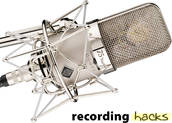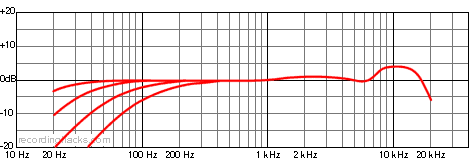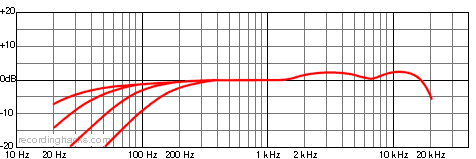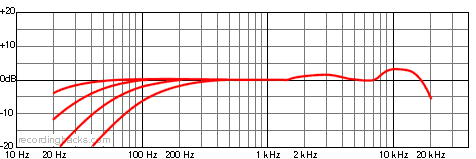 Neumann M 149 Tube
Neumann M 149 Tube
Multi-Pattern Tube Condenser Microphone
The M 149 Tube is one of Neumann’s flagship tube condenser microphones, with a large-diaphragm capsule, 9-way pattern-control switch, and very low self-noise.
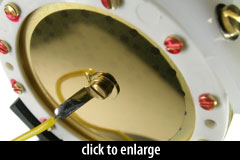 The capsule is Neumann’s K47, a dual-diaphragm design with center-terminated membranes. This capsule is sometimes also known as the K49. Note that some printed documentation from Neumann states that this microphone uses an M7 capsule. We believe this to be a misprint. (The same mistake exists in the M147 manual.)
The capsule is Neumann’s K47, a dual-diaphragm design with center-terminated membranes. This capsule is sometimes also known as the K49. Note that some printed documentation from Neumann states that this microphone uses an M7 capsule. We believe this to be a misprint. (The same mistake exists in the M147 manual.)
The K47/K49 capsule does not produce a pure Cardioid pickup pattern; its output becomes more directional at higher frequencies.
Martin Schneider
The standard K47/49 [is] Cardioid somewhere below 1kHz, super/hypercardioid the higher you go. Thus, the M147 has the polar pattern of a U47 or U47fet, tendency towards super/hypercardioid, as there’s no polarisation voltage on the rear [diaphragm].
In the M149, when set to Cardioid, we put some volts on the rear [diaphragm], so the Cardioid setting does mean best possible cardioid for this capsule, and does not mean zero volts on the rear [diaphragm].
For zero volts on the rear in the M149 you have to select the intermediate setting between Cardioid and Hypercardioid.
The amplifier circuit is similar to that of the M147 Tube; both realize 10dB of gain from the tube in the amplifier circuit, and both use a transformerless output stage.
The circuit design is among the quietest we’ve seen for a tube microphone. Self-noise varies with polar pattern; Neumann publishes the following measurements:
- Cardioid: 13dBA
- Omni: 16dBA
- Figure-of-8: 11dBA
It should be noted that the M 149 amplifier circuit is extremely hot — it outputs much higher voltage than most condensers. Sensitivity, like self-noise, varies with pattern, but in all cases is among the highest-output condensers in our database:
- Cardioid: 47 mV/Pa
- Omni: 34 mV/Pa
- Figure-of-8: 62 mV/Pa
Highly sensitive (high-output) microphones can be useful for project studios that lack high-end preamps, because such mics need much less amplification and therefore can reduce or avoid preamp-based noise in the signal path. However, on loud sources, these mics might require the use of an attenuator, whether built into the mic, or into the console, or inline.
The M 149 has no built-in pad.
A 7-position switch provides a highly variable high-pass filter, described as allowing for a -3dB cut at any of seven frequencies in half-octave steps between 20Hz and 160Hz.
MIX, 2006
[O]n my first singer… the M149 has a “finished mix” sound with a bold midrange character, extended high frequency and loads of output.
In 2003, Neumann released a 75-year anniversary edition of the M149 called the M149 Jubilee. These microphones are distinguished by a “platinum-finish” grille and body and a 75th Anniversary engraved logo. 500 such microphones were made, with consecutive serial numbers from 1 to 500. Stereo pairs were available within this series.
The M 149 has a matte nickel finish, and includes a cloth dustcover, power cable, elastic suspension mount (Neumann p/n EA 170), power supply, and aluminum flight case.
The Neumann M 149 Tube is also known as: M149, M149 Jubilee.
Specifications
| Pickup Patterns | Pads & Filters |
|---|---|
|
Omnidirectional
(34 mV/Pa; 20 - 20,000 Hz) Cardioid (47 mV/Pa; 20 - 20,000 Hz) Hypercardioid (n/a mV/Pa; 20 - 20,000 Hz) Bidirectional (62 mV/Pa; 20 - 20,000 Hz) Wide Cardioid (n/a mV/Pa; 20 - 20,000 Hz) |
|
| Capsule Dimensions | Impedance | SPL/Noise |
|---|---|---|
| Diameter n/a |
50 Ohms (Low) | Max SPL: 120 dB Self-noise: 13.0 dB(A) |
| Weight | Length | Max Diameter | Interface(s) |
|---|---|---|---|
| 730g (25.75oz) | 201mm (7.91'') | 70mm (2.76'') |
|
| Power Specifications |
|---|
|
Did we get anything wrong on this page? Please let us know!


